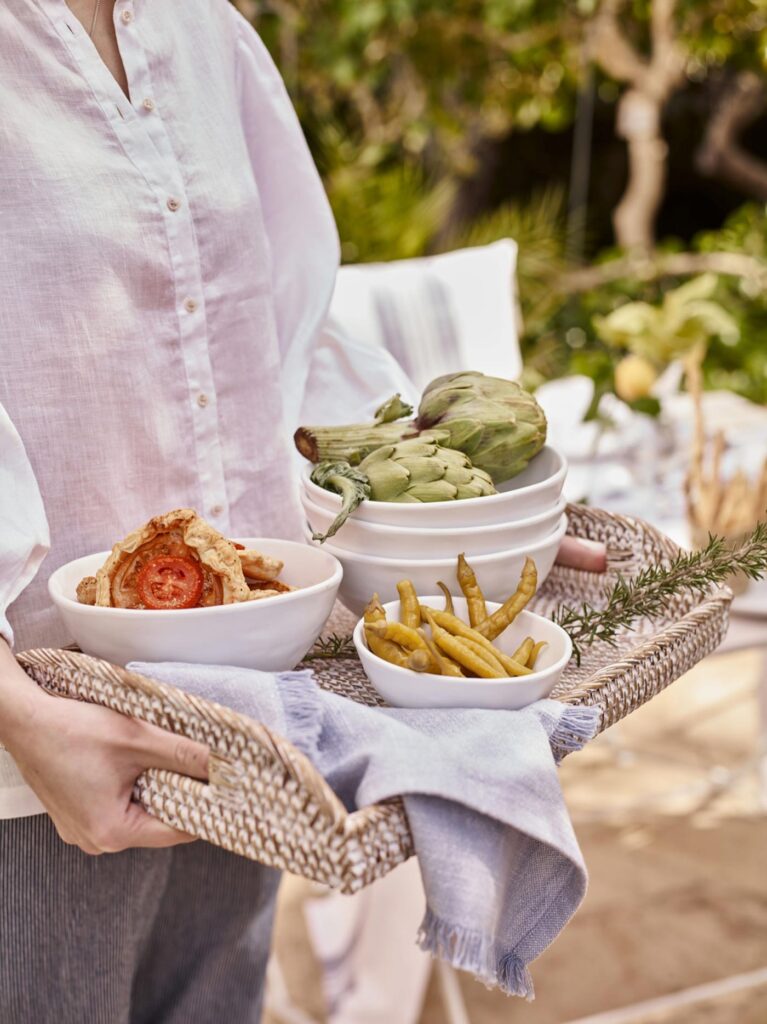
PLAN YOUR GARDEN FOR HEALTHY EATING
Certified Nutritional Health Counselor, Sara Siskind reminds us that consuming a variety of plant-based, whole foods at least 80% of the time can help keep us strong and healthy by reducing inflammation in the body. Best of all you can grow them in your garden (see potting mix below).
Leafy Greens
Vitamins: Leafy Greens are one of the most nutrient dense foods (calcium, magnesium, iron, potassium, vitamin A, vitamin K, and vitamins B1 and B2 and fiber) containing the least amount of calories.
In the Body: Whether you are looking to watch your weight, prevent or reverse disease, improve the strength of your bones and teeth or just get a natural healthy glow, eating leafy greens on a daily basis is a must.
What to plant: collard greens, bok choy, swiss chard, kale and mustard greens.
Beans and Legumes
Vitamins: Beans and legumes are an excellent source of dietary fiber, protein, B vitamins, folate, and an assortment of other vitamin and minerals.
In the Body: Beans are known to help keep the digestive track running smoothly because they contain soluble and insoluble fiber. First they slow down digestion to give you a full feeling and then they help to prevent constipation. Beans are a wonderful substitute for animal protein and can help lower blood sugar levels and cholesterol.
What to plant: chickpeas, lentils, peas and white beans.
MAKE YOUR SOIL BETTER FOR VEGGIES
Amendments that can improve your soil and increase veggie growth.
If your soil is too acid, this calcium-rich flour, ideal for leafy greens may help.
Gaia Green Oyster Shell Flour, 2kg/20 kg; gaiagreen.com
If your soil is heavily compacted or clay, you can sprinkle it on the soil surface.
Gaia Green Gypsum, 2kg/20 kg; gaiagreen.com

What is cold stratification? Starting seed outdoors in fall, they then lay dormant over the winter and flower the following spring. Generally, this is done with wildflowers which undergo this process naturally in temperate climates.
Is it too late to try cold stratification if I didn’t put seeds outdoors in fall? No, this process can be forced with refrigeration. CSL used a coconut coir brick. Simply break the brick in half and pour warm water in the hole until expanded and damp. Add seeds, seal accompanying plastic bag, and label. Place in the refrigerator for 1-3 months according to seed requirements before planting outdoors. Once planted, feed with phosphorus and potassium for longer and more prolific blooms.
Toolkit
CANNA COCO brick, 2- 10 litres; canna.ca
Gaia Green All Purpose and Power Bloom, 2kg/20 kg, $19.95/117.24; gaiagreen.com

STARTING SEEDLINGS INDOORS
Prepare a clean, small pot filled with equal parts coco coir, worm casings, and vermiculite. Use a sharpened pencil to transfer seeds from packet to pot at recommended depth. Sprinkle with water. As seedlings grow water occasionally with a spirulina and water solution to encourage leaf growth.
Spirulina Powder, 454g, $44.99; organika.com
Gaia Green Worm Castings
CANNA Coco, 50 L bag; canna.ca
This original gardening article first appeared in the Winter 2020/2021 issue of City Style and Living Magazine.
Don’t Forget to Follow City Style and Living on Social Channels: Instagram, Twitter, Facebook, Pinterest













